18 Key DevOps Trends
- Updated: Nov 10, 2024
- 6 min
DevOps, a combination of development and operations, has completely transformed how software is built, deployed, and maintained.
As we look ahead to 2025, DevOps practices are evolving to keep up with the rapid pace of technological advancements and the growing complexity of software systems.
This article will highlight the top 18 DevOps trends that are crucial for enhancing efficiency, collaboration, and product quality in software development processes.
Check out our DevOps glossary that covers key terms to help you stay on top of DevOps practices and tools.
Transform your ideas into reality with top-tier software developers — contact us to get started!
Top DevOps Statistics for 2025
- The global DevOps market is expected to exceed $25.5 billion by 2028.
- Only 3 out of 10 organizations are able to track their cloud expenses.
- More than 80% of organizations currently practice DevOps, which is expected to increase to 94% shortly.
- Public clouds are the most prevalent DevOps platform, with hybrid and multi-cloud strategies gaining popularity.
- 85% of DevOps professionals plan to implement a shared services model soon.
- 75% of DevOps teams consist of up to 12 individuals.
1. Adoption of GitOps Practices
Many software development teams are increasingly adopting GitOps, a methodology that combines the best practices of DevOps with infrastructure automation.
By using Git as a single source of truth for declarative infrastructure and applications, organizations can significantly enhance their operational efficiencies and streamline their deployment processes.
According to industry surveys, over 60% of organizations implementing DevOps practices are also integrating GitOps strategies to improve their application deployments’ consistency, reliability, and security.
This trend is expected to continue, with projections indicating that by 2026, 80% of organizations will have adopted this approach, driven by the need for more robust and scalable infrastructure management solutions.
2. Increased Focus on Security and Compliance
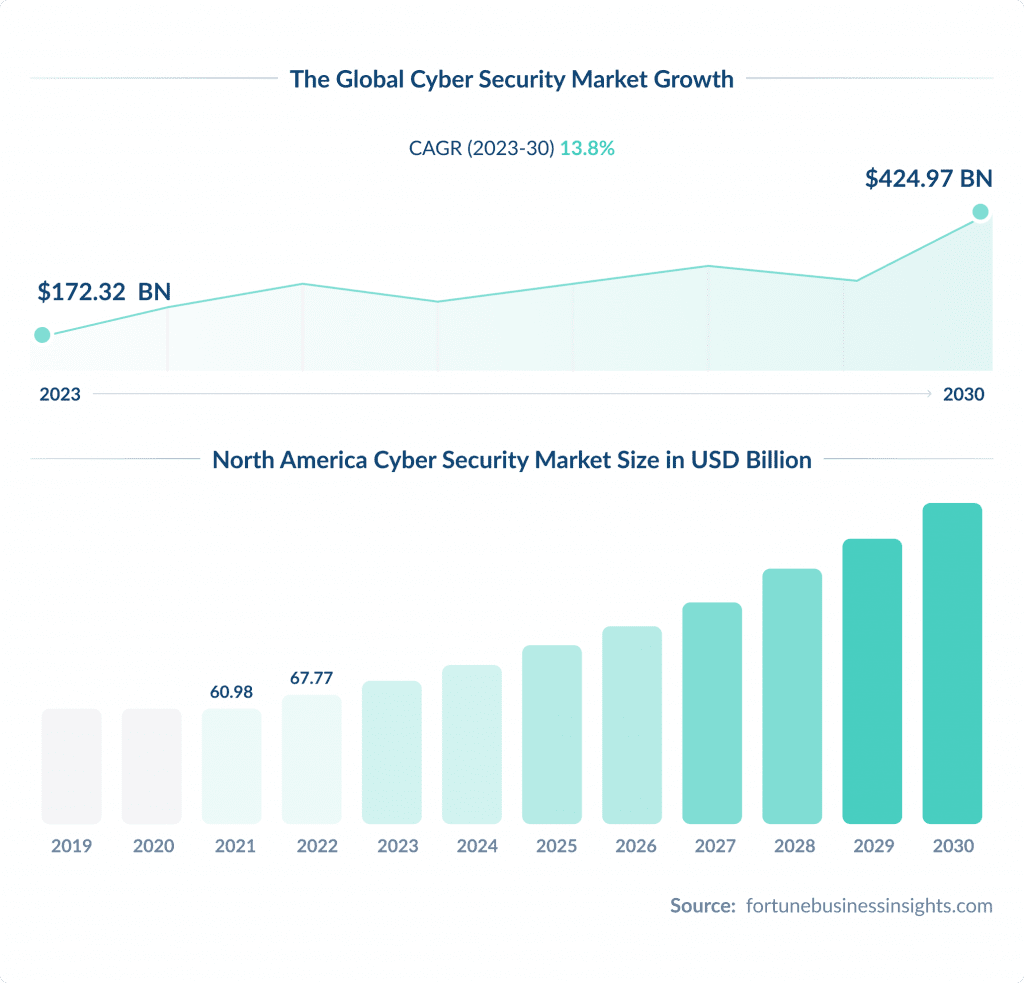
As cyber threats continue to escalate and regulatory demands increase, DevOps specialists are placing greater emphasis on security and compliance.
The frequency of data breaches resulting in significant financial losses and reparations is becoming more widespread. Consequently, there is a shift towards integrating security measures right from the start of the software development lifecycle.
By 2025, 75% of DevOps initiatives will include integrated security practices, up from just 40% in 2023.
This shift aims to protect sensitive data, meet regulatory standards, reduce legal risks, and enhance customer trust.
3. Greater Use of Containerization
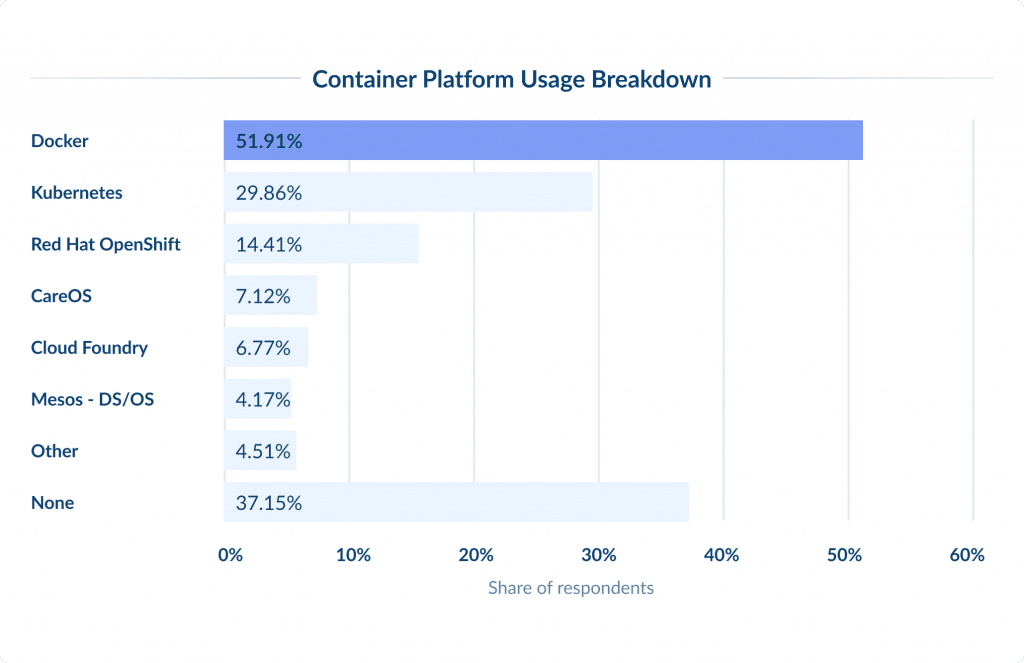
Containerization technology is transforming how applications are developed, deployed, and managed. Platforms like Docker and Kubernetes are at the forefront of this change, offering a lightweight alternative to traditional VMs.
The global container market is projected to grow from $2.1 billion in 2023 to $4.3 billion by 2026, with a compound annual growth rate of 30%.
This surge is attributed to containers’ ability to improve application portability, efficiency, and scalability, making them an essential component of modern DevOps practices.
Optimize Your Development Lifecycle with DevOps Experts.
4. Expansion of Cloud-Native Development
Cloud-native development is growing rapidly as more businesses embrace scalable and elastic cloud computing models.
With microservices, containers, service meshes, and declarative APIs, cloud-native applications are designed to be agile, resilient, and scalable, making them an attractive option for digital-first models.
The Cloud Native Computing Foundation has reported a 50% increase in cloud-native project contributions in the past year alone, and this trend is expected to continue with an estimated 35% annual growth rate.
By 2026, cloud-native development practices are anticipated to become more widespread across industries, highlighting the shift towards building and running applications that fully exploit the benefits of cloud computing.
By choosing cloud-based app development, companies can ensure their applications are accessible and scalable.
5. Growth of DevSecOps
DevSecOps is a growing trend as companies are looking to decrease vulnerabilities and adhere to security regulations from the start of software development.
By 2026, 40% of organizations are projected to adopt DevSecOps practices. Companies recognize the importance of integrating security in the CI/CD pipeline rather than treating it as an afterthought.
This approach helps companies speed up the development cycle while significantly reducing the risk of security breaches.
6. Increased Automation Through AIOps
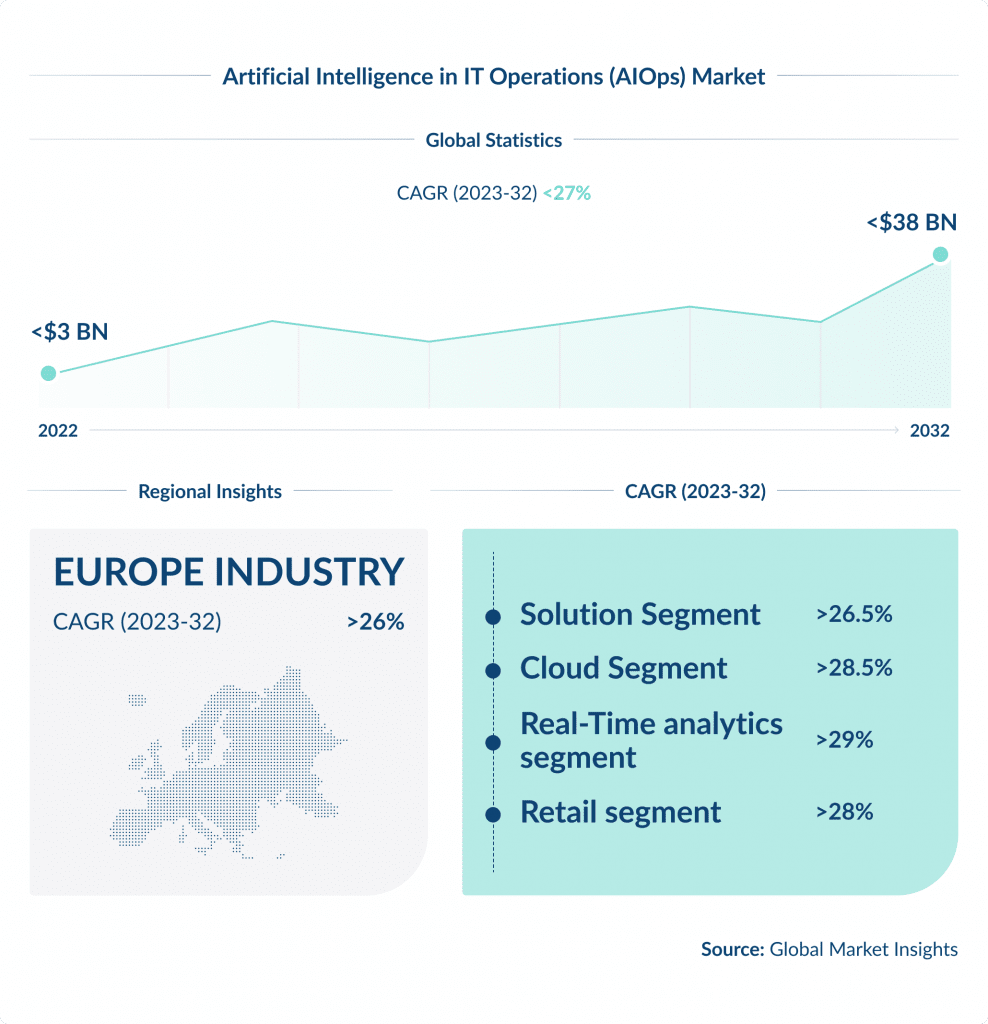
Artificial Intelligence for IT Operations (AIOps) in DevOps practices is becoming increasingly popular. Its purpose is to improve automation, effectiveness, and decision-making processes.
AIOps automates the analysis and management of IT data using machine learning and big data. It provides predictive insights and proactive issue resolution.
It is predicted that by 2026, AIOps will be a standard component in 40% of DevOps teams, significantly reducing the time spent on routine operations tasks and improving service quality.
7. Focus on DevOps for Edge Computing
With the increasing adoption of edge computing, there is a noticeable trend towards developing DevOps strategies that cater to the specific demands of edge computing environments.
This involves managing and deploying applications across several edge locations, which poses challenges in continuous integration and delivery, monitoring, and security.
By 2025, half of the new edge computing initiatives are anticipated to integrate DevOps practices tailored for the edge, optimizing resources and ensuring seamless application performance across distributed environments.
8. Adoption of Machine Learning Practices
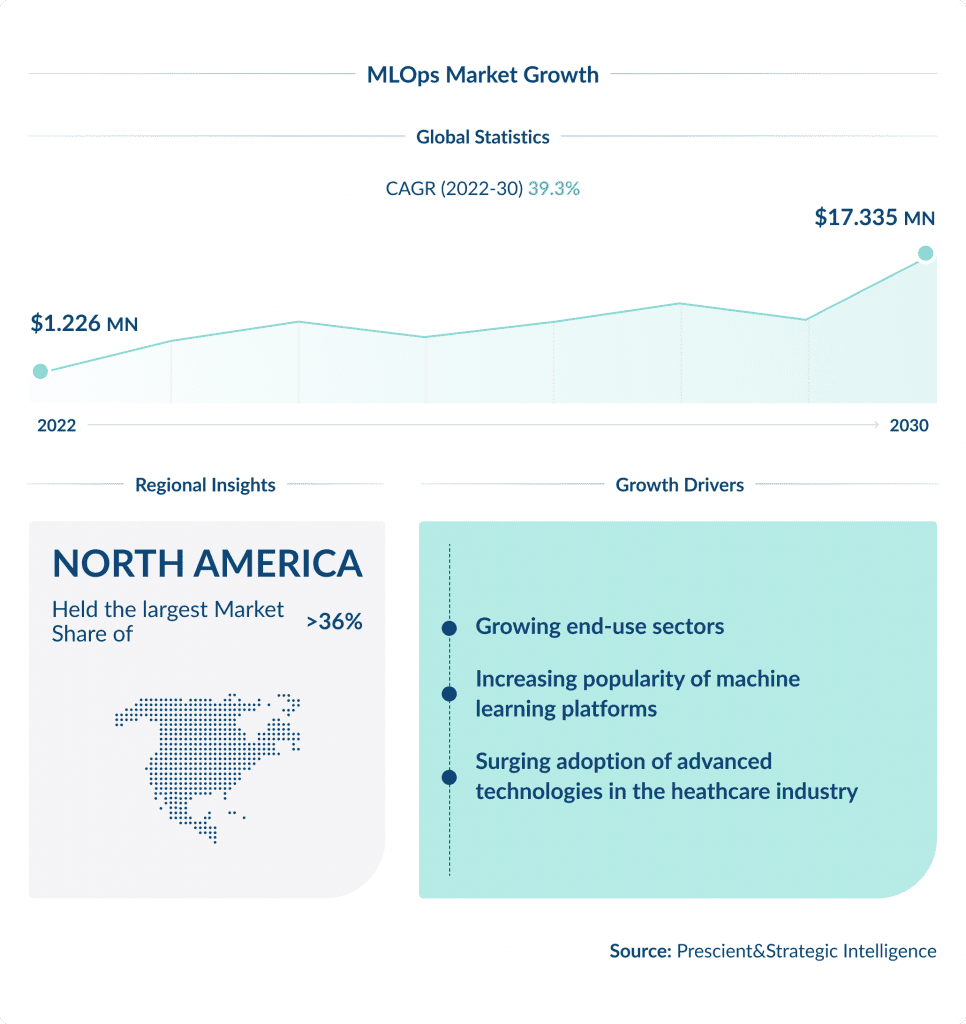
Integrating Machine Learning Operations (MLOps) into DevOps has become an essential trend that enables the smooth incorporation of machine learning models into production environments.
This practice aims to manage the lifecycle of machine learning models, ensuring they are efficiently deployed, monitored, and maintained within production environments.
According to projections, by 2026, more than 35% of businesses are expected to adopt MLOps practices, enhancing their ability to scale AI and machine learning.
9. Rise of DataOps
Organizations are increasingly turning to DataOps to manage and leverage their data effectively.
DataOps applies DevOps principles to data analytics, promoting agility, automation, and accuracy in data analysis.
This approach aims to improve the quality and speed of data insights by fostering collaboration between data scientists, engineers, and business stakeholders.
It is expected that a significant number of large enterprises will adopt DataOps practices by 2025.
10. Use of Blockchain in DevOps
Blockchain technology is starting to impact DevOps by improving security, traceability, and collaboration throughout the development process.
Although it is still in its infancy, the use of blockchain in DevOps is anticipated to increase, with potential applications ranging from secure software supply chains to decentralized app development.
By 2026, approximately 10% of DevOps teams are projected to adopt blockchain to enhance data integrity and simplify operations.
11. Growth of NoOps and Autonomic Systems
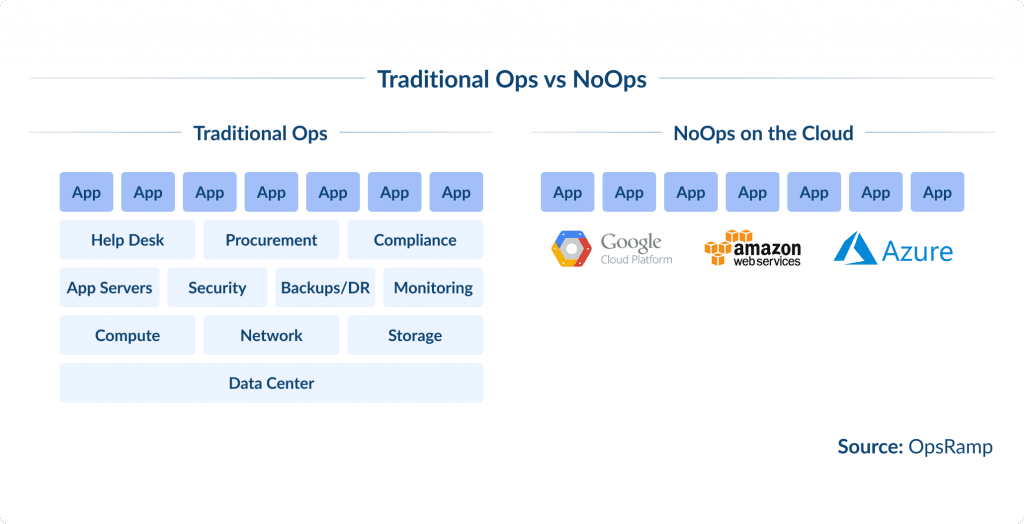
The idea of NoOps, which refers to fully automating IT operations and eliminating the need for manual intervention, is becoming more popular.
This trend is being fueled by advancements in cloud computing, AI, and machine learning, which enable self-healing systems and automated service management.
By 2025, around 20% of businesses are expected to adopt NoOps for their cloud-native applications to achieve greater efficiency and reduced operational costs.
12. Increased Adoption of Microservices
Organizations are increasingly adopting microservices architecture to improve their agility, scalability, and ability to independently update services.
Microservices provide faster deployment cycles, easier scalability, and better fault isolation, making them a fundamental part of modern application development.
By 2025, the majority (90%) of new applications are expected to be built using microservices architecture, which is an increase from 80% in previous years.
13. Greater Focus on Observability
As DevOps gains more traction, observability is becoming crucial, empowering teams to gain a deep understanding of their applications and systems.
This trend includes monitoring, logging, and tracing, which offers insights into the performance and health of the infrastructure and applications.
By 2026, around 70% of DevOps teams are expected to implement comprehensive observability tools and practices, enabling them to proactively resolve issues and optimize performance.
14. Rise of DevOps for IoT Systems
The convergence of DevOps and IoT (Internet of Things) is opening up new possibilities for streamlining and automating IoT application development and deployment.
DevOps methodologies are being tailored to meet IoT’s unique challenges, including device management, data collection, and real-time processing.
The market for IoT DevOps is expected to grow at a rate of 25% annually, with an estimated value of $15 billion by 2026, driven by the need for continuous integration, delivery, and deployment in IoT projects.
Unleash AWS's Full Potential with Our Developers.
15. Integration of QA Earlier in Cycles
Many software development teams are increasingly adopting the “shift-left” testing approach by integrating quality assurance (QA) early in the development lifecycle.
This means that testing and quality checks are conducted from the initial stages of development, which can help identify and address issues early on, reducing the cost and time required for fixes.
It is expected that by 2025, integrating QA earlier in development cycles will lead to a decrease of up to 30% in critical defects, underlining the importance of early and continuous testing.
16. Growth of Multi-Cloud and Hybrid Cloud Strategies

Organizations are increasingly adopting multi-cloud and hybrid cloud strategies due to their benefits, such as cost optimization, performance, compliance, and resilience.
By leveraging the best services from multiple cloud providers, businesses can have greater flexibility and agility in deploying and managing applications and data across various environments.
By 2026, over 75% of midsize and large organizations will adopt a multi-cloud or hybrid cloud strategy.
Conclusion
DevOps trends are moving towards integrated and efficient practices that enhance collaboration and speed in software development.
For businesses to remain competitive, quickly bringing products to market is critical.
The future will emphasize automating more processes and strengthening security measures, ensuring high-quality and reliable software solutions.
From AI to blockchain, explore the most impactful IT trends of the year.













